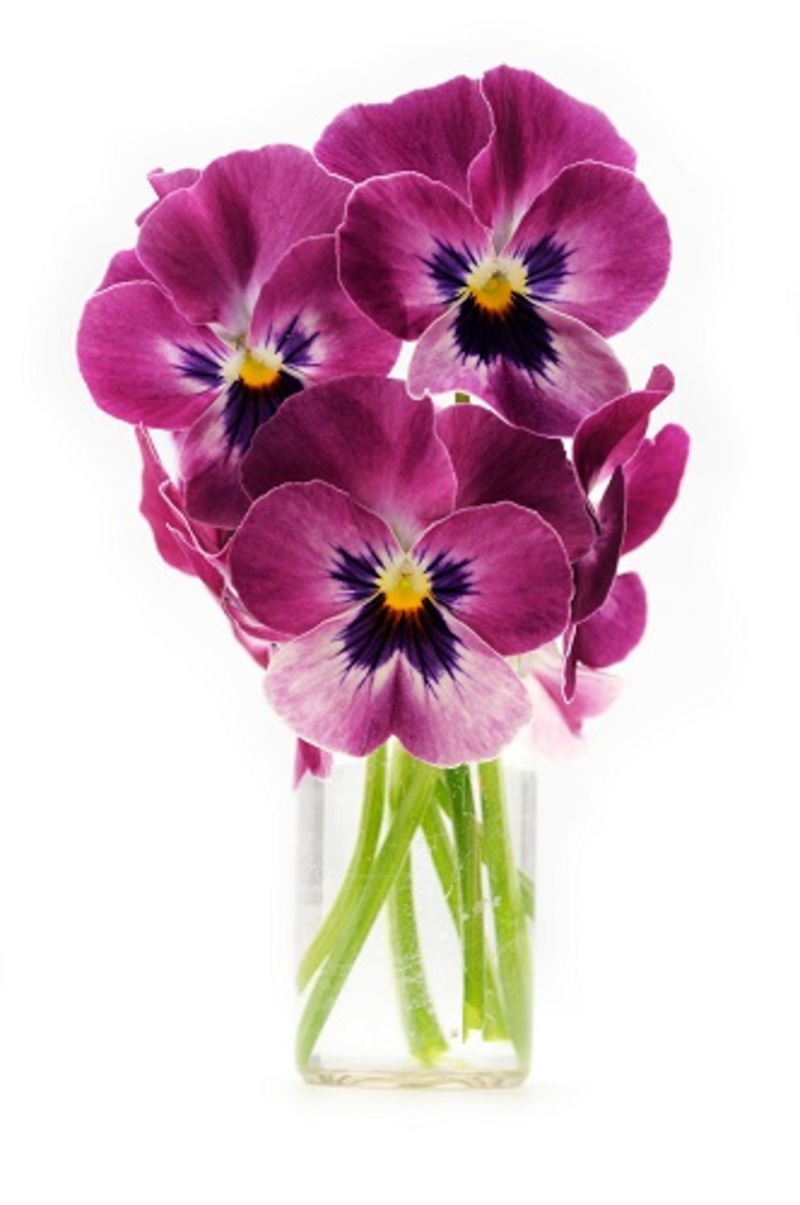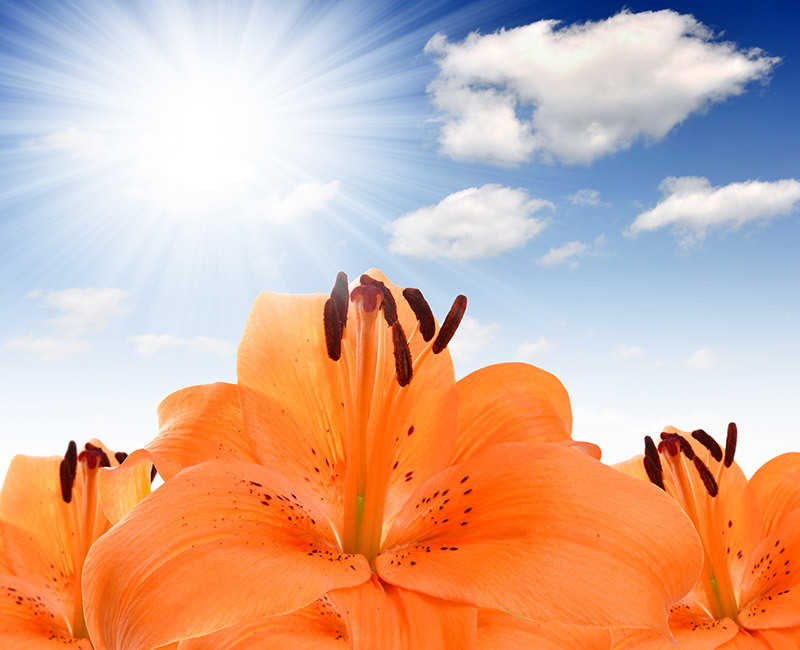Ensure Longevity of Your Blooms with 3 Easy Preservation Tips
Posted on 18/08/2025

Ensure Longevity of Your Blooms with 3 Easy Preservation Tips
Flowers are the universal language of beauty, love, and celebration. Whether you have received a bouquet for a special occasion or simply want to enjoy the fresh fragrance and vibrancy of your garden cuts, knowing how to extend the life of your flowers is invaluable. But, how do you ensure your cherished blooms last longer and stay fresh? Discover our expert-approved and easy-to-follow strategies! This comprehensive article will walk you through three effective flower preservation tips that will help turn your fleeting petals into long-lasting treasures.
Table of Contents
- Step 1: Start with Freshness
- Step 2: Adopt the Best Flower Care Habits
- Step 3: Explore Simple Flower Preservation Methods
- Bonus: Professional Hacks to Prolong Bloom Life
- FAQs: Ensuring Longevity of Your Bouquets
Step 1: Start with Freshness
The first key step in preserving flowers longer is choosing the freshest blooms possible. Why? Fresh flowers inherently have more life and resilience, giving you a head start in the race against time.
How to Choose the Freshest Blooms
- Look at the Petals: Seek out flowers with firm, vibrant petals. Avoid any with browning or transparencies on the edges.
- Check the Buds: Semi-open buds are ideal! Fully opened flowers may have already started their decline, while tight buds might not open after being cut.
- Inspect Stems and Leaves: Healthy, green, and perky stems/leaves are a sign of freshness. Avoid droopy or yellowed foliage.
- Source: Buy from trusted local florists or farmer's markets, as supermarket flowers may have been shipped and stored for longer, reducing their lifespan.
Tip: If you're picking blooms straight from your garden, harvest them early in the morning when their water content is highest.
Step 2: Adopt the Best Flower Care Habits
Proper care and maintenance can double the lifespan of your cut flowers. It's not just about placing them in a vase--it's the little things that make a lasting difference. Ready to embrace best practices?
Essential Tips for Flower Maintenance
-
Trim the Stems Correctly
Always trim flower stems at a 45-degree angle with sharp, clean scissors or a knife. This increases the surface area for water absorption and prevents the stems from sitting flat at the vase bottom, which can block water uptake. -
Remove Foliage Below Waterline
Leaves submerged in vase water rot quickly, growing bacteria that drastically shorten floral longevity. Strip any foliage below the water line for cleaner, fresher vases. -
Change Water Frequently
Replace vase water every 2-3 days. Each time, give the vase a thorough rinse and add room temperature water. Clean water is critical for extending floral life. -
Add Flower Food
Most bouquets come with a sachet of floral preservative--use it! If not, you can make your own with a mixture of sugar, bleach, and lemon juice (see recipe below). -
Avoid Direct Sunlight, Heat, & Drafts
Place your arrangement in a cool spot, away from radiators, sunny windows, and fruit bowls (fruit emits ethylene gas that speeds up decay).
Homemade Flower Food Recipe
- 2 cups water
- 2 teaspoons sugar (for nourishment)
- 2 teaspoons lemon or lime juice (to acidify water)
- 1/2 teaspoon bleach (inhibits bacteria)
Stir well and pour into your vase. This simple cocktail helps keep bacteria at bay and provides energy for your blooms.
Step 3: Explore Simple Flower Preservation Methods
Now that your flowers are thriving, let's learn how to preserve flowers for weeks--or even years! These three easy preservation tips ensure your floral displays remain radiant long after their natural life span.
1. Air Drying: The Classic Method for Longevity
Air drying is one of the most traditional and cost-effective methods for preserving flowers at home. This technique works best on robust flowers like roses, lavender, and statice.
- Gather the stems into small bunches, tying them securely with string or a rubber band.
- Hang the bunches upside down in a dark, ventilated area (like a closet) to protect against sunlight, which can fade colors.
- Allow them to dry for approximately 2-4 weeks until petals feel crisp to the touch.
- Once completely dry, use hairspray for extra hold and color preservation.
Benefits: No special equipment required; air drying naturally keeps the shape and structure of most blooms.
2. Silica Gel Drying: Lock In Color and Shape
Silica gel drying is perfect for preserving flowers in their most vibrant form. Silica gel absorbs moisture rapidly, helping to retain the blossom's color and natural shape.
- Pour a layer of silica gel crystals in an airtight container.
- Arrange flowers face-up on the gel and delicately cover them with more crystals, ensuring no petal is exposed.
- Seal the container and store in a cool, dry place for 1-2 weeks.
- Once dried, gently remove and brush off excess gel.
Tip: Silica gel is available at craft stores and can be reused, making this an economical and mess-free method.
*Pro Tip: Use this for delicate flowers like daisies, pansies, or orchids.*
3. Pressing Flowers: Flat & Beautiful for Art Projects
Pressing flowers is a time-honored method for flower preservation and creative keepsakes. Pressed flowers can be framed, placed in resin, or used for handmade cards.
- Choose flat flowers (like pansies or violets) or remove excess bulk from thicker blooms.
- Place flowers between parchment or blotting paper inside a heavy book.
- Weigh the book down further if possible, and leave undisturbed for 2-4 weeks.
- Once dried, handle with care and use for your favorite craft projects.
Preserved pressed flowers can last for decades if stored away from moisture and direct sunlight.
Bonus: Professional Hacks to Prolong Bloom Life
- Refrigerate Overnight: Placing your vase arrangement in the fridge each night can extend the life of your fresh flowers by several days. Just make sure no fruit or veg shares the fridge shelf!
- Remove Wilting Flowers: As soon as a flower in your bouquet starts to wilt, take it out. Decaying blooms can trigger a faster decline for the remaining flowers.
- Mist Your Flowers: Using a spray bottle, lightly mist the petals to keep them hydrated--especially in dry indoor climates.
- Cut Stems Underwater: For particularly sensitive flowers, cut stems under running water to prevent air bubbles from blocking water uptake (a process called embolism).
FAQs: Ensuring Longevity of Your Bouquets
Q1: Which flowers are easiest to preserve for the long-term?
Flowers with robust petals and stems (such as roses, sunflowers, and hydrangeas) tend to hold up best with both air and silica drying techniques. Delicate blooms may require extra care or pressing.
Q2: Can I preserve a wedding bouquet at home?
Absolutely! Try silica gel for 3D shape, or press flowers for frameable keepsakes. Remember to start preservation as soon as possible after your event for best results.
Q3: How long do preserved flowers last?
Properly air-dried or pressed flowers can last many years if kept out of direct sunlight and away from humidity. Silica-gel dried flowers often retain color longest.
Q4: Are there any fresh flower varieties that last longer than others?
Yes! Carnations, chrysanthemums, alstroemeria, orchids, and lilies are notable for their natural longevity in vases.
Q5: Does sugar or vinegar in vase water help keep flowers fresh?
Sugar provides food, and vinegar lowers pH, both of which help, but the addition of a tiny amount of bleach is necessary to kill bacteria effectively--hence the trio in homemade flower food.

Conclusion: Long Live Your Blooms!
Preserving flowers doesn't have to be intimidating or time-consuming. By starting with the freshest blooms, following best care practices, and applying simple preservation methods like air drying, silica gel, and pressing, you can enjoy your favorite blossoms for weeks, months, or even years. Implement these effective tips today and witness your arrangements stand the test of time--turning fleeting floral beauty into lasting memory.
Did you enjoy these easy flower preservation ideas? Share your own tips and experiences with us below, and help others improve the longevity of their favorite blooms!
Latest Posts
Flower Shop Success Stories: Transforming [NEIGHBOURHOOD] Gardens
Eco-Friendly Flower Arrangements: Sustainable Options in [AREA]
Understanding Yourself Through the Language of Birth Flowers
Which Petal Perfectly Portrays Your Personality
Ensure Longevity of Your Blooms with 3 Easy Preservation Tips






